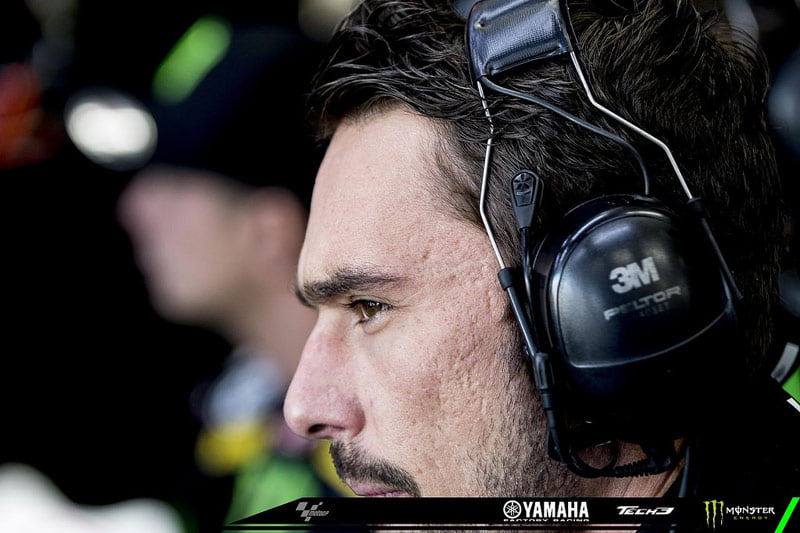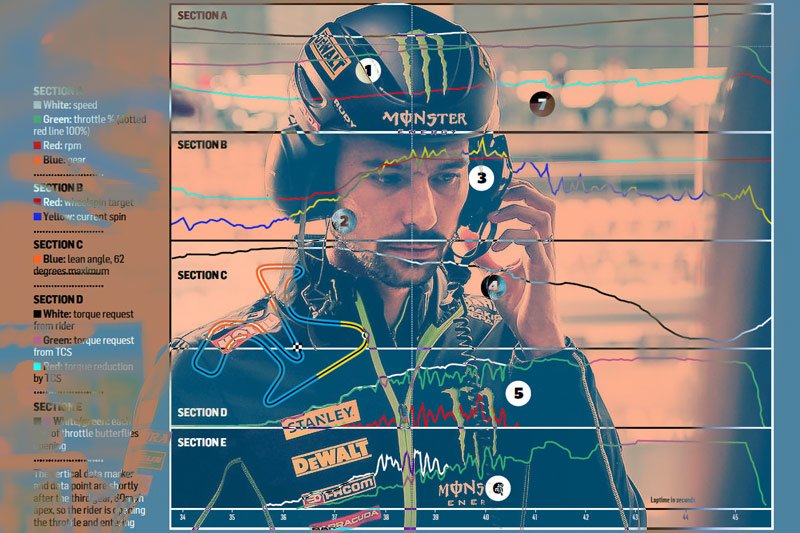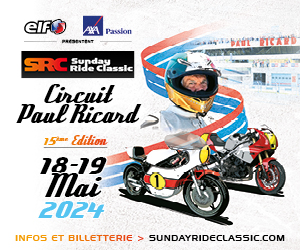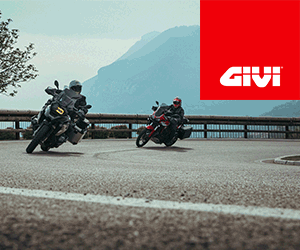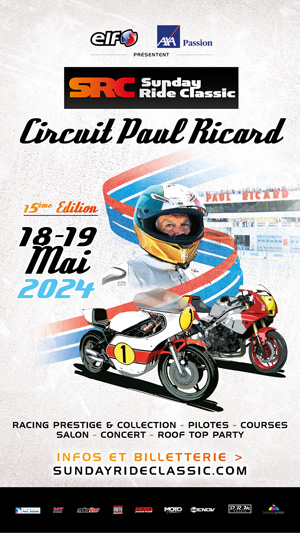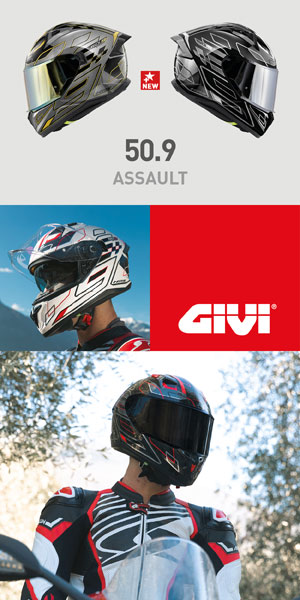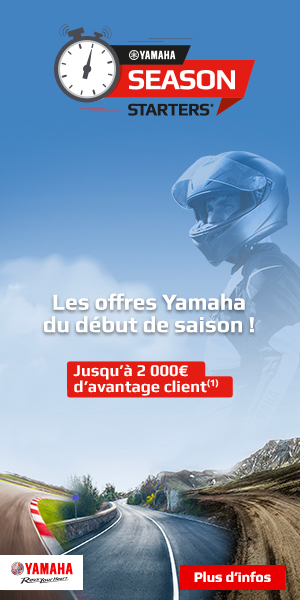Valentino Rossi has never stopped proclaiming it; Yamaha is missing a high-level IT specialist who knows all the tricks of the Magneti Marelli software to make the most of the M1!
Despite unique hardware and software, electronics remains to this day one of the areas where manufacturers obtain the most differences, mainly in terms of traction, and much more than by working on the engine, the chassis or the aerodynamics. .
To the general public, this seems like a bit of magic because, after all, Yamaha technicians are quite competent enough to use software. But the subject is slightly more complex than that, and so we asked Maxime Reysz, who officiates within the Tech3 team on the Yamaha ofHafiz Syahrin, to shed light on it for us.
Maxime Reysz:“Today, MotoGP bikes are very powerful and there is a big phase at the exit of a corner where we cannot exploit this power, particularly in the lower gears which are first, 2nd and 3rd. We have to control the power and this control will influence the recovery of grip and acceleration. There are riders who have the impression of doing everything well, and of having a well-tuned bike that does what is asked of it, but of having opponents who optimize this phase better. They then feel that there is a little delay, particularly at the moment at Yamaha, and we often hear that Ducati is perhaps a little ahead in this area.
But, forgive us for being deliberately provocative, when you don't know anything about it, it seems simple to adjust software: after all, these are only numbers that you enter into a table...
“Our goal is to deliver perfect power. That is to say, if there is not enough power, the motorcycle does not move forward, and the problem also occurs when there is too much power. In this case, we pitch the motorcycle, so either we force the rider to control this pitch by decreasing the power himself by playing with the throttle, or we waste this power by slipping. And in this case, the force that the tire can transmit decreases enormously. Basically, there is too much power, the tire is slipping and the bike is not moving forward. There is also a third case where with too much power, the motorcycle is unstable. Here too, the grip will not be optimal. That is to say that we will pump, we will move, or even deteriorate the following braking.
So basically, you have to keep in mind that for each corner, you have to try to optimize this power level, but that this also evolves with the wear of the tires throughout the race.
At Yamaha, we use 2 or 3 different power levels throughout the race.”
Can we call this mapping?
" Yes. And we will try to arrange them in the best possible way so that the rider can benefit from a truly responsive motorcycle with all the potential of a new tire, and which will then adapt to the degradation of the tires to that it remains easy to pilot. It must remain stable and have the best possible acceleration.”
Okay, but if Ducati has an advantage in this area, it is not because the figures returned by the Italian teams are “better” than those returned by the other teams. This happens upstream, despite unique software. Can you explain it to us?
“So it’s true that everyone has the same hardware, the same hardware, and the same software. What is software? It's a user interface, and all technicians have the same, but above all, inside, it's thousands of parameters. What we call total architecture. And we, as technicians, use a very small fraction of these parameters. What must be understood is that each brand gives a totally different color to its system, to its total architecture. So even if it is the same software and the same hardware, from one brand to another, different areas will be developed to achieve different levels of performance depending on the brand's philosophy. For the general public, it's as if everyone has the same color palette, but everyone draws something different.
Basically, it's like a pyramid. All the thousands of parameters will be established really starting at the base with the sensors, then each manufacturer will calibrate everything, from the base to the top. And so, each brand has developed the base of its pyramid in its own way. We, the electronic technicians, our work is towards the top, that is to say we will use the few parameters which will really influence what we will adjust on a daily basis: power, Anti Wheeling , Traction Control, etc. ".
To understand clearly, when you say that each brand has developed the base of its pyramid, is it by coding or by putting numbers in boxes?
“It’s putting numbers in boxes, not coding. In the past, when each brand had its own software, engineers had to actually code to develop this or that idea. They created the function so they could develop it. There, we have a common architecture, that is to say that the main functions exist and are developed by Magneti Marelli. They are therefore common to everyone. Afterwards, each manufacturer puts its figures in the boxes to try to optimize, and this is necessarily done in a different way. We, the teams, only intervene at the end, in a much more limited framework.”
Optimizing power seems to be your primary concern. Concretely, at Yamaha, how does this happen: cut-off of a cylinder, degradation of the ignition or something else?
“(Smile) it’s very simple. Power is controlled with the ignition and with the throttles. In fact, the butterflies are motorized and they are very fast and very precise. You have to imagine that they sway a bit like a leaf in the wind in real time. This is how the motor will deliver its power at a given time with very fine sampling.”
Is it the oscillation of the butterflies that allows you to reduce the power?
" Yes. In fact, very simply, when we exceed the level of slippage that we have established in our setting, the butterflies will oscillate in this way, and at the same time there is work on the ignition which will deteriorate. in real time. All this, to really go from one power level to another in a fraction of a second.”
Thank you Maxime…
